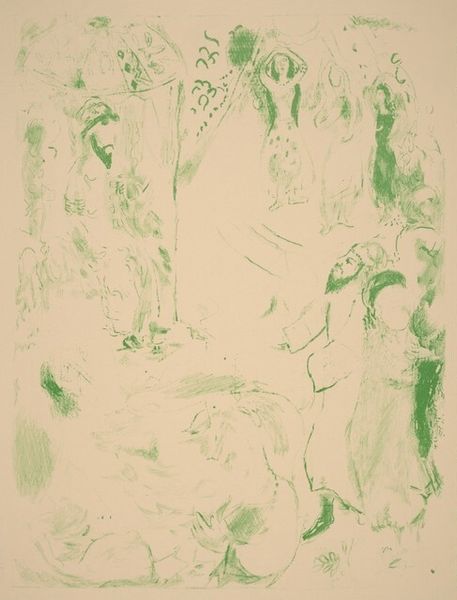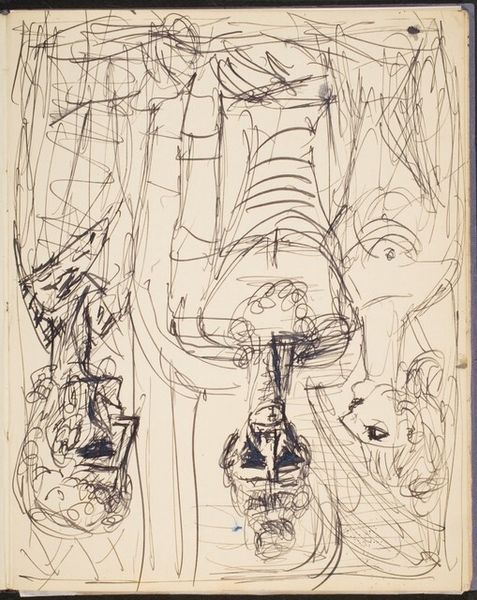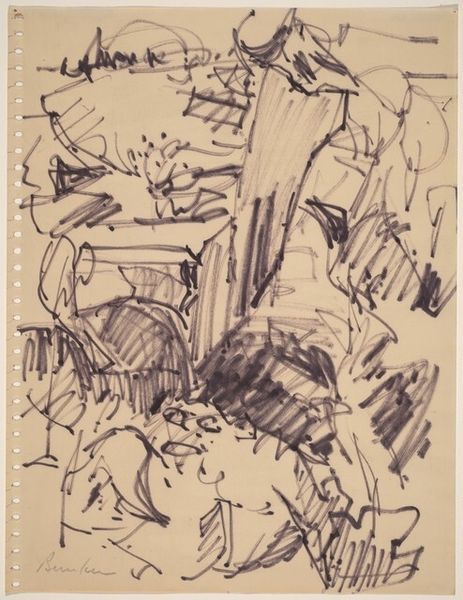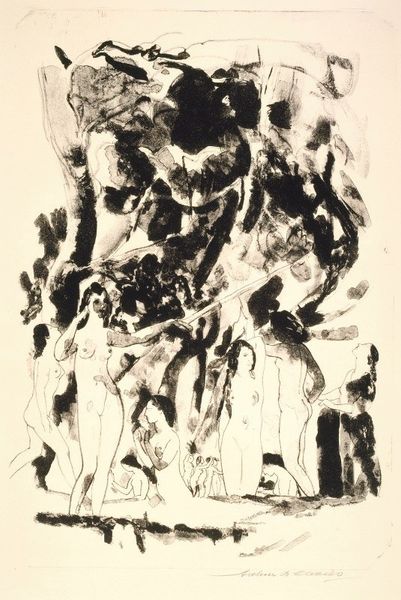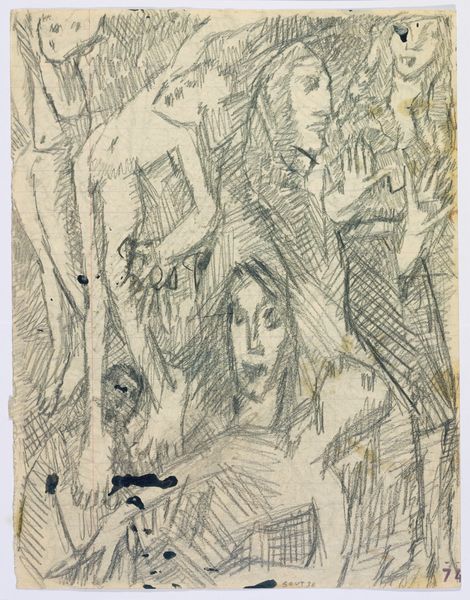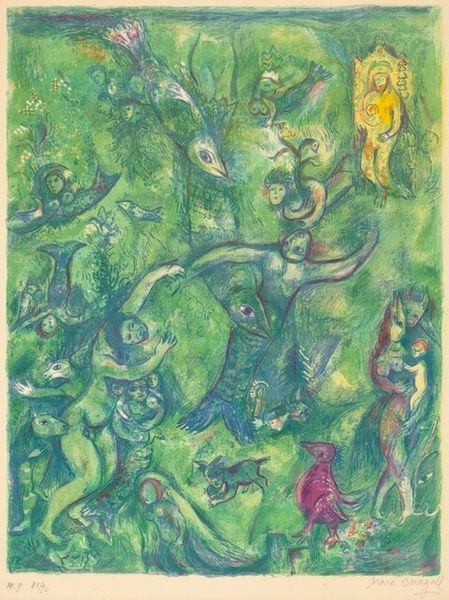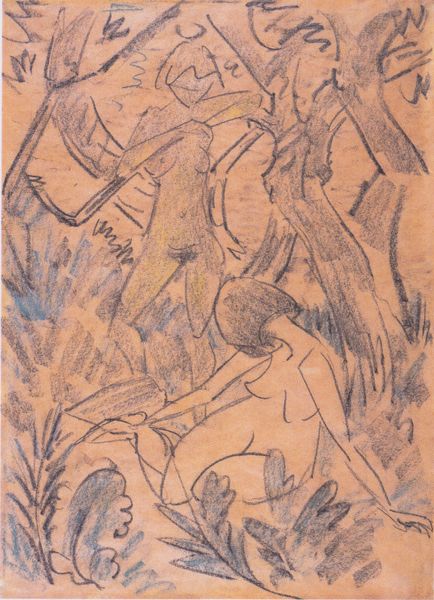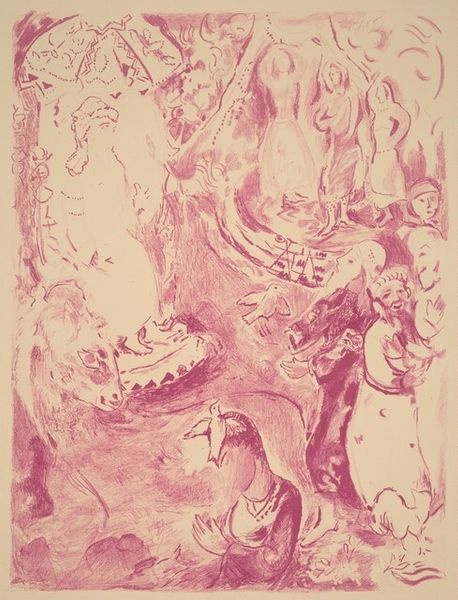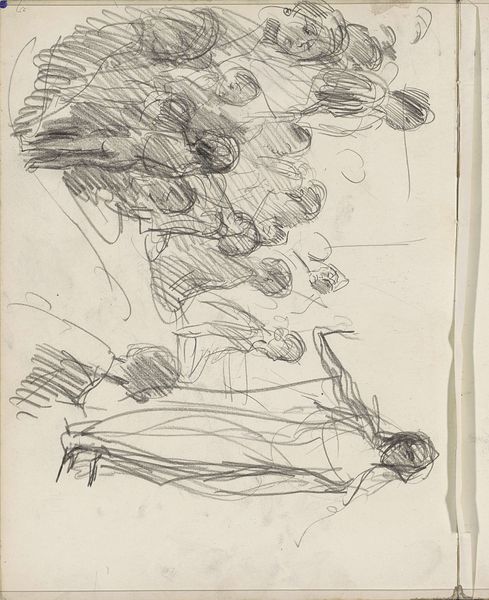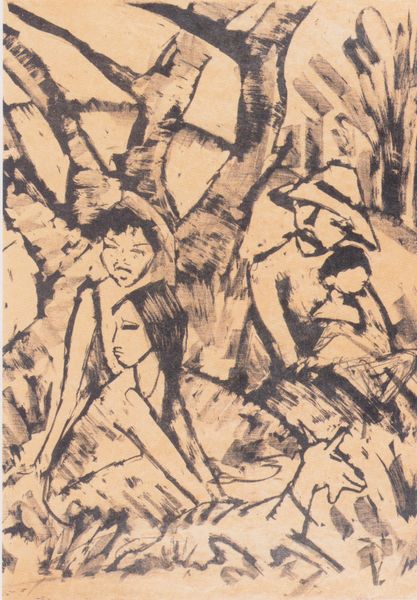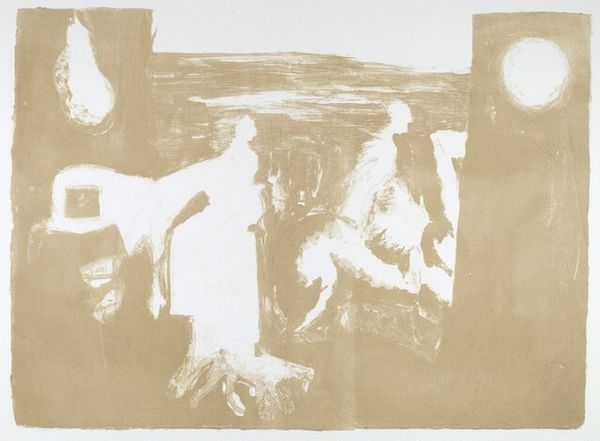
Copyright: National Gallery of Art: CC0 1.0
Editor: This is Marc Chagall's "The Tale of the Ebony Horse," created around 1945-46, using ink and watercolor. There's almost a dreamlike quality to it, the figures seem to float. The narrative is unclear to me. How do you interpret this work, particularly considering the time it was made? Curator: It's crucial to consider the socio-political context of the mid-1940s. Chagall, a Jewish artist, was living in exile during World War II. This work, illustrating a tale from "One Thousand and One Nights", can be seen as a form of escapism, but also a reflection on displacement and cultural identity. Notice how the figures are not grounded, evoking a sense of uprootedness. Editor: That's interesting, I hadn’t thought about the wartime context so directly impacting the sense of 'floating'. What about the Ebony Horse itself? Curator: The Ebony Horse in the tale is a symbol of technological marvel, capable of transporting its rider across vast distances. During wartime, technology becomes associated with both destruction and liberation. Chagall uses this mythical figure to question the role of technology and its impact on society and the individual. What is the public role of a folktale, do you think, at this moment? Editor: I guess, folktales and storytelling keep traditions and historical imagination alive, connecting to a rich cultural past while facing the unknown future. I see your point now. It’s like a preservation of cultural memory, and a hope for the future even amidst terrible events. Curator: Exactly. Chagall uses his art to not just illustrate, but to actively engage with these complex historical forces. The lightness is also an access point for many people; his images made sure culture had a public role. Editor: I definitely see this work differently now. The context gives it a depth I hadn’t initially recognized. It is more than an illustration; it is also history lesson. Curator: It also illuminates how art can serve as a repository for collective memory and a form of subtle social commentary.
Comments
No comments
Be the first to comment and join the conversation on the ultimate creative platform.

